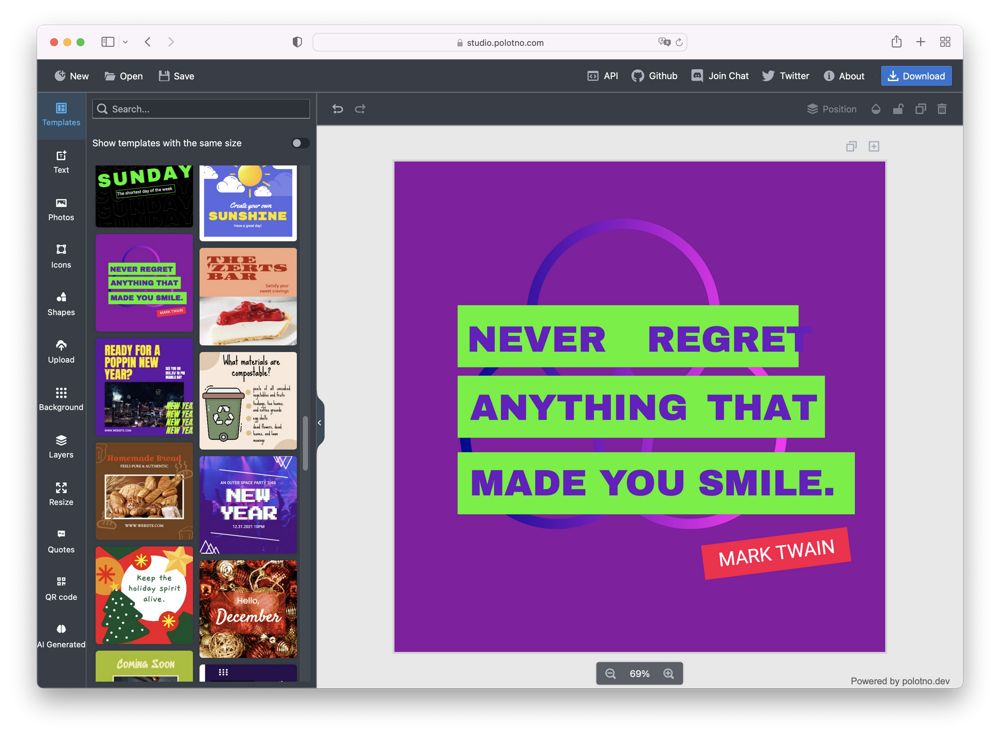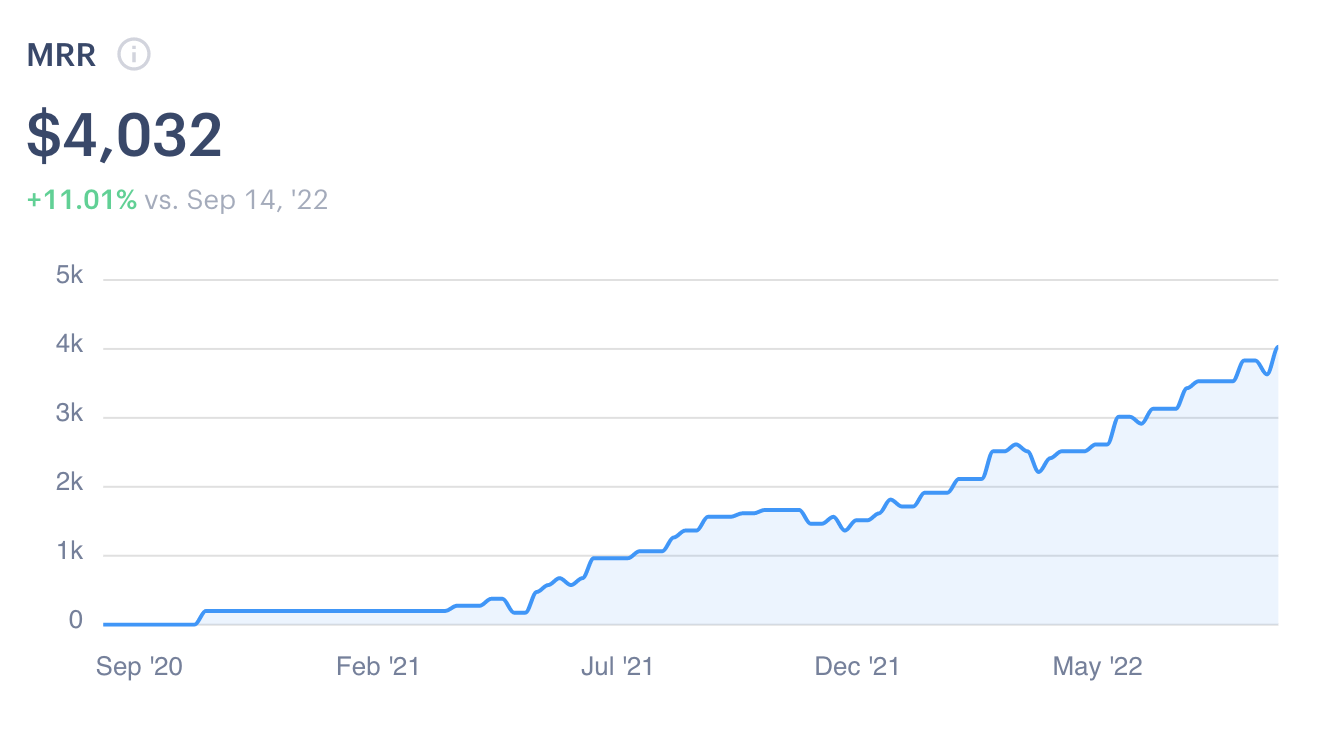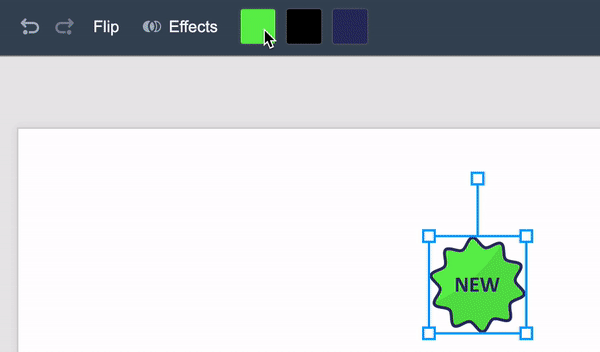Hey, my name is Anton. After 2.5 years of development, I am excited to announce that Polotno SDK v1.0 is out! 🎉
From this moment, I will follow the semantic versioning. It should keep your updates safe and predictable.
But don't trust modern web and js developers and assume that every version can break your code. 😅
What is Polotno SDK?
Polotno SDK is a set of JavaScript modules, libraries and React Components to make "canva-like" design editors. It is already used by many companies in production.

Polotno SDK is a good fit for a variety of business use cases:
- Design and social media apps
- Printings and merchandising companies
- E-commerce and online stores
Motivation
I am core maintainer of KonvaJS 2d canvas library and its sibling libraries such as react-konva and vue-konva. During my freelance career, I was working on several projects that tried to make another canva.com competitor (don't confuse "konva dot js" and "canva dom com"). On some cases, an app wasn't directly a competitor, but a tool with very similar editor functionality with just a different target audience. Over time I realized that I have good enough experience to make my own application. Why I am making such apps for someone else? I can make it for myself!
But, developing the application is probably not the hardest part. If I want to make another canva-clone, I will have to spend a lot of energy on marketing, finding users and inventing something that other applications don't have. And there are already an insane number of competitors. I gave up on the idea.
Only after a couple of years of background thinking, the nice idea visited my mind. Instead of making canva-clone as B2C business, I can make a B2B product for developers. I can make a javascript library/framework to easily develop and integrate full-featured canvas editor. And that looks like a nice fit for my skills. I am supporting konva for a long time. I spend countless hours on documentation, supporting, bug fixing and helping other DEVELOPERS to use it. So I know how to make a good developer experience. Well, I hope so...
This is how Polotno SDK was born. More on its history and plans you can read at the bottom of this post.
Getting started
Polotno SDK is a tool for developers. So be ready to be one or find someone who knows why 0.1 + 0.2 !== 0.3.
If it is too boring for you, you can see SDK in action in this Minimal Codesandbox or customized demo application Polotno Studio.
Installation
npm install polotno
Bootstrap with React
This code is not-so-minimal, but it is ready-to-use template that you can easily modify later for your use cases
import React from 'react';
import ReactDOM from 'react-dom/client';
import { PolotnoContainer, SidePanelWrap, WorkspaceWrap } from 'polotno';
import { Toolbar } from 'polotno/toolbar/toolbar';
import { PagesTimeline } from 'polotno/pages-timeline';
import { ZoomButtons } from 'polotno/toolbar/zoom-buttons';
import { SidePanel } from 'polotno/side-panel';
import { Workspace } from 'polotno/canvas/workspace';
import '@blueprintjs/core/lib/css/blueprint.css';
import { createStore } from 'polotno/model/store';
const store = createStore({
// you can create it here: https://polotno.com/cabinet/
key: 'LICENSE_KEY',
// you can hide back-link on a paid license
// but it will be good if you can keep it for Polotno project support
showCredit: true,
});
const page = store.addPage();
export const App = ({ store }) => {
return (
<PolotnoContainer style={{ width: '100vw', height: '100vh' }}>
<SidePanelWrap>
<SidePanel store={store} />
</SidePanelWrap>
<WorkspaceWrap>
<Toolbar store={store} downloadButtonEnabled />
<Workspace store={store} />
<ZoomButtons store={store} />
<PagesTimeline store={store} />
</WorkspaceWrap>
</PolotnoContainer>
);
};
// make sure `root` element exists in your html and has defined size
const root = ReactDOM.createRoot(document.getElementById('root'));
root.render(<App store={store} />);
Business
At the current moment, Polotno Project is a solo-person indie bootstrapped project. I started to write its first lines on February 2020. It took me three months to make "proof-of-concept" product. Then six months more for adding core features, polishing, creating initial website. Somewhere around September 2020, I started public announcements. On December 2020, I got my first paying customer. At time of writing this post, I have 4k MRR on license subscriptions.

The real income from this business is much bigger because I am also selling customization development services and full source code access. But these aspects are not very predictable, so I am not focusing on them much.
What is next?
I see a large demand for such tools in the market. And I see how my competitors are coming into the play. There are many features in my backlog, such as animations/videos support and more export formats as print-ready PDF, HTML and SVG. Also tons of other tools around SDK, such as extended Cloud Render API.
The roadmap is available at Polotno Roadmap.
At the begging of Polotno SDK development, I created Polotno Studio as a showcase of what is possible with this tool. My initial plan was that Studio will be always-free, no signups, not paywall application. Remember I mentioned that I don't want to spend time on marketing and finding users and doing B2C business? There were very small number of users for a long time, but recently it is getting more and more popular. Right now I have around 6k daily users (it is much?). And I want to add some cool, but expensive features such as "remove background from image". So probably I will still have to add some paywall to the Studio. Need to think how to keep it "hustle-free" as in original plan.
Here must be call-to-action. But I am bad at marketing, so subscribe to my channel and click the like button.
